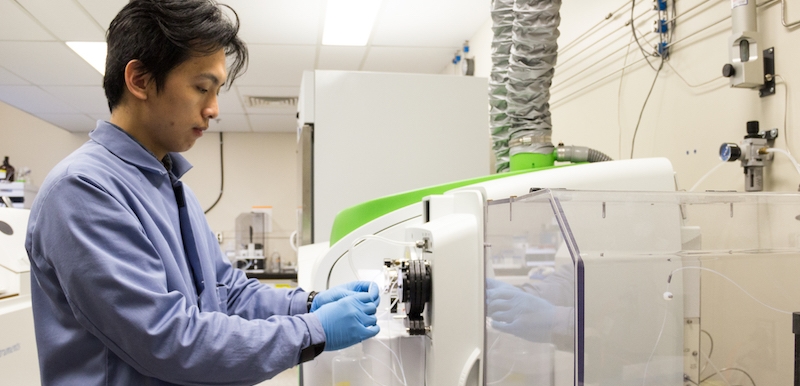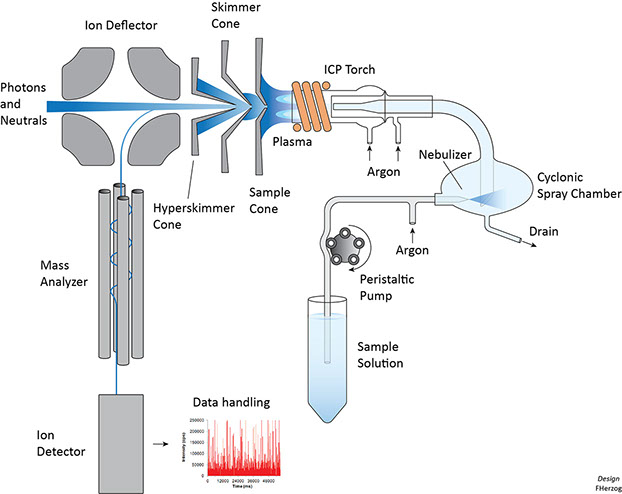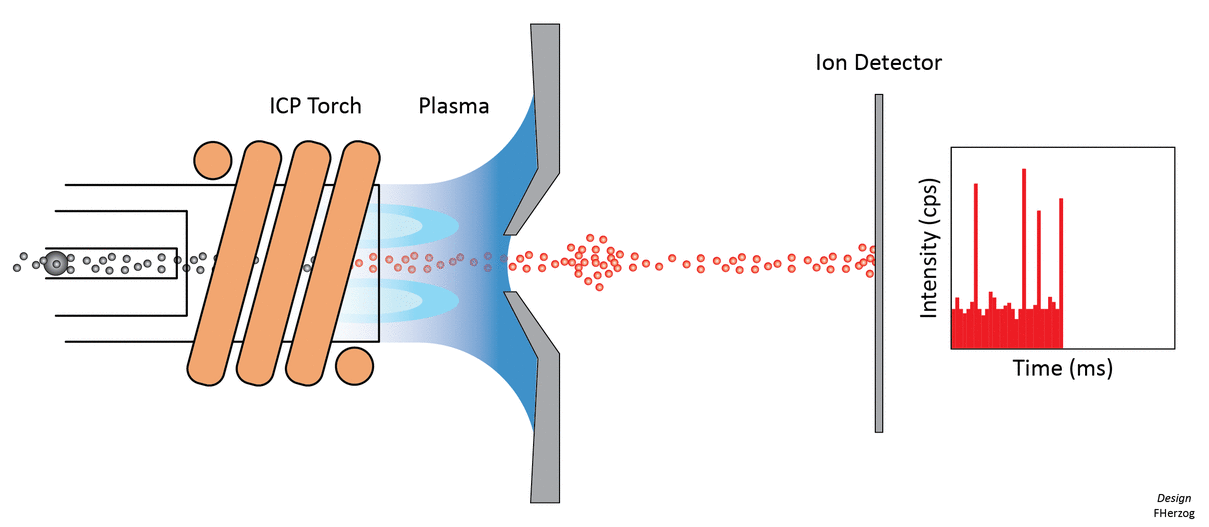Single Particle Inductively Coupled Plasma Mass Spectrometry (SP-ICPMS)

The ICP-MS is one of the most sensitive instruments available to determine the elemental compositions of particles (for atomic masses >12 amu) with e.g. detection limits of 0.09 ng L-1 for Eu; 0.2 ng L-1 for Ce. ICP-MS analysis is used not only to determine primary chemical content but also to quantify low level impurities. Our laboratory is especially interested in many of the more novel (and less well understood) elements that are used in numerous modern applications such as LCDs, LEDs, semi-conductors, diodes and photocells including the rare earth metals as well as Ge, Ga, In, Zr and Nb.

While routine analysis can be performed on digested samples to provide chemical content over a wide dynamic concentration range (10 orders of magnitude), we also have the capacity to perform analysis in a single particle mode. In this mode, data from the mass spectrometer is acquired for single particles in order to provide not only the elemental composition of the material but also the total particle mass (from which diameters can be derived). Much of the success of SP-ICP-MS comes from its ability to provide detailed information on the composition and particle size distributions of nanoparticles, generally faster and at much lower concentrations than other commonly used techniques such as transmission electron microscopy (TEM) or dynamic light scattering (DLS).

Particle number concentrations can be determined from the number of events (detected particles) and a knowledge of the transport efficiency. Successive partial intensities are integrated into single particle events, and the intensity of each event are converted to the equivalent mass of the analyzed element using a calibration with ionic standards. Particle diameters can be determined from the known density of the analyzed element, the mass fraction of the oxidized part, and by assuming spherical shape. Particle mass concentrations are obtained by summing the masses of all of the individual particles.
This content has been updated on 18 April 2023 at 14 h 55 min.
